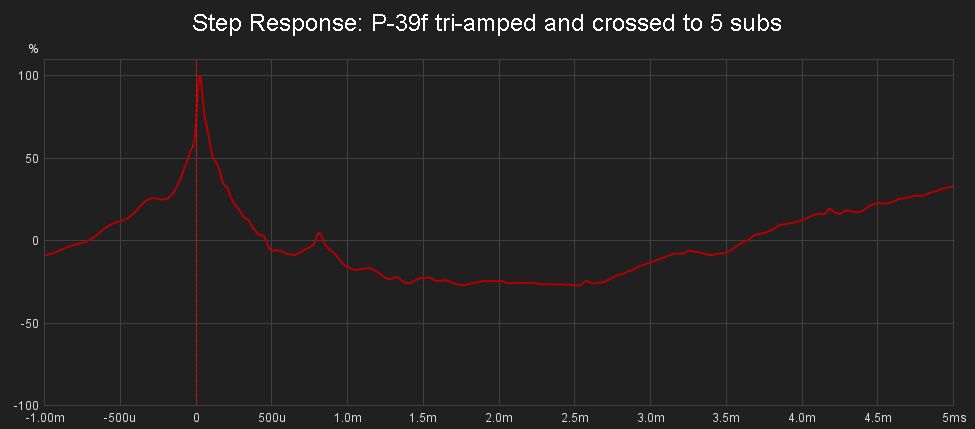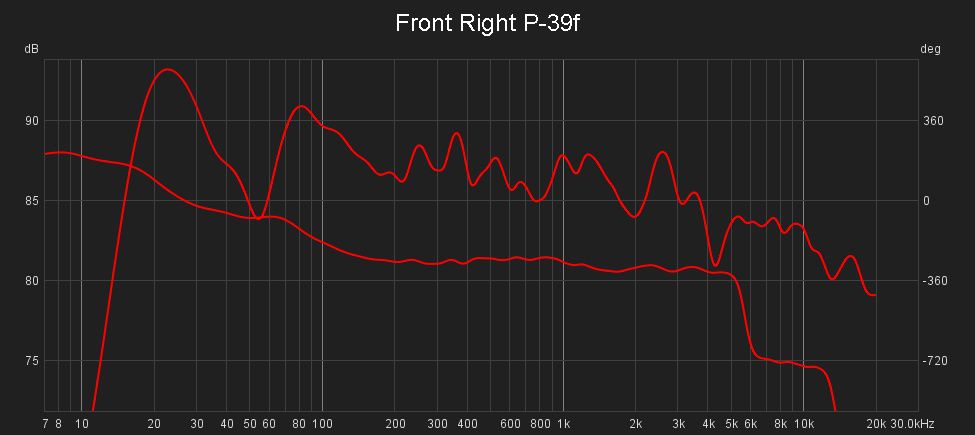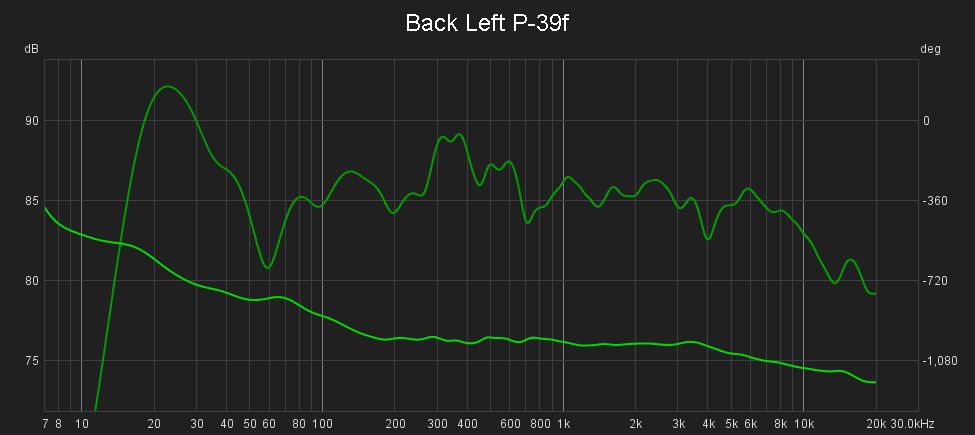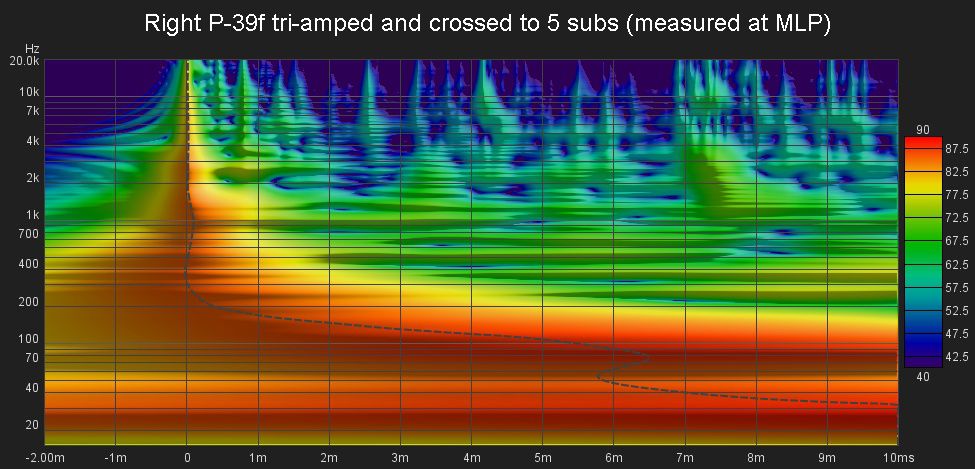-
Posts
682 -
Joined
-
Last visited
About etc6849
- Birthday 10/13/1978
Profile Information
-
Gender
Male
Recent Profile Visitors
The recent visitors block is disabled and is not being shown to other users.
etc6849's Achievements

Forum Veteran (4/9)
228
Reputation
-
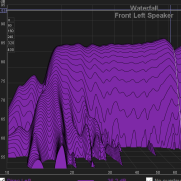
palladium Wanted: Klipsch Palladium P-17b and/or P-39f Speakers
etc6849 replied to etc6849's topic in Garage Sale
Thanks! I will keep that in mind. Your speakers sound much better in my current setup btw (full active triamping crossed to 5 subs). Drop me a line if you are ever in Columbia, SC if you want to listen to them again. -

palladium Wanted: Klipsch Palladium P-17b and/or P-39f Speakers
etc6849 replied to etc6849's topic in Garage Sale
What state are you located in? -

palladium Wanted: Klipsch Palladium P-17b and/or P-39f Speakers
etc6849 replied to etc6849's topic in Garage Sale
An Atmos decoder capable of providing 16 channels of AES digital output is finally available for under $5k. https://www.audiosciencereview.com/forum/index.php?threads/new-product-arvus-h2-4d-atmos-renderer-simultaneous-16-channel-aes-balanced-analog-dante-output.26248/ It's really neat that the 1U (1.75") height Arvus H2-4d would fit nicely in my current rack setup too. I'm just not sure where the extra amps and speaker processor (4x8 DSP+DAC) will go; probably under one of the rear subs. Previously, this was a $20-30k endeavor just for the processor. It was never going to happen as I don't listen to my theater as much as I used to. Most of my time now days is split between my son and stocks, but I still love audio. -

palladium Wanted: Klipsch Palladium P-17b and/or P-39f Speakers
etc6849 replied to etc6849's topic in Garage Sale
@MMurg Wow, that's a very nice setup. I plan to do something similar. My Palladium setup isn't complicated enough... I'm only using 20 channels of DSP, DAC and amplification for 5.1 (5 actively tri-amped speakers with 5 subs). I'd like to get my channel count over 30 lol. I get incredible side imaging with four P-39f's. Can't say I'm dissatisfied with the setup by any means. -

palladium Wanted: Klipsch Palladium P-17b and/or P-39f Speakers
etc6849 replied to etc6849's topic in Garage Sale
Thanks, and yep... They are all rare at this point which is why I'm not in a hurry to buy. During the upcoming recession I want to move to a bigger place and I'm planning on a Palladium Atmos setup. I figure I'd start collecting more speakers now as they come up for sale. They just won't get used for two years or so lol. -

palladium Wanted: Klipsch Palladium P-17b and/or P-39f Speakers
etc6849 posted a topic in Garage Sale
Looking for some Klipsch P-17b bookshelf speakers and maybe another pair of Klipsch P-39f's if they are close to Irmo, SC. The P-17b's are pretty easy to ship. -

Using REW to Determine Time Delays Between Drivers
etc6849 replied to Chris A's topic in Technical/Restorations
I would compare the waterfall plots to see the differences. It is much easier to see things that way if you are only looking at the bass region. You will see a faster decay of 20-80Hz. Time aligning sub drivers with sub drivers is much easier. Just use the impulse/etc plot to time align them. Start with one sub, then align another to it, then align another to one of the first two subs, etc... After that, you hook all the subs up to a common output, pick a filter, measure, then align each woofer with all the subs going at once.- 221 replies
-
- active speaker alignment
- rew
-
(and 1 more)
Tagged with:
-

Using REW to Determine Time Delays Between Drivers
etc6849 replied to Chris A's topic in Technical/Restorations
I do level, then set the crossovers, then do time alignment as I described. Things should be done in this order. Even setting level later will impact the crossover point (it sounds like you already are aware of this, but I'm putting it here for others). The slope at the crossover region is seldom a brick wall, so there is plenty of overlap for the time alignment method I describe. Technically, FIR filters don't impact phase (using them for woofer to midrange and midrange to tweeter), so really I could go back and adjust things out of order, but for the low order bessel filter I use for my woofers and subs I definitely can't do that obviously.- 221 replies
-
- active speaker alignment
- rew
-
(and 1 more)
Tagged with:
-

Using REW to Determine Time Delays Between Drivers
etc6849 replied to Chris A's topic in Technical/Restorations
@Chris A My step response looks very different than yours. I think mine might look more ideal, but honestly, I have never looked at my step response so I am curious what you think. I have never used psy smoothing either, but seems like a good idea so here is what things look like for SPL and phase. Note I intentionally tilted levels when I set them up, and I'm not using any PEQ or Dirac. Perhaps if I point the mic at the speaker as you suggest it would look nicer. I'm definitely capturing more of the room effects the way I've been measuring. One thing that is confusing is the phase shift that appears at 6kHz and 13kHz when I unwrap phase. This only appears in my front two speakers and not my rear speakers.- 221 replies
-
- active speaker alignment
- rew
-
(and 1 more)
Tagged with:
-

Using REW to Determine Time Delays Between Drivers
etc6849 replied to Chris A's topic in Technical/Restorations
I have a small room, so I just did all measurements at the listening position, with the mic pointed toward the ceiling and the tip at ear height. For the time alignment, I also did something different. My thinking was for time alignment, the primary concern would be around the crossover region. So I performed band limited measurements for the drivers over a reasonable overlapping region, then compared the impulse/ETC plots. For example, to align a sub to a woofer with a 110Hz crossover, I would do measurements covering 20-200Hz for both my sub and the woofer. I then compare the two ETC plots, and get the time delay that way. I did similar method for the woofer and midrange, etc... What is interesting is that this seemed to produce decent results after looking at the peak energy curve on the spectrogram (something I didn't think about using for time alignment).- 221 replies
-
- active speaker alignment
- rew
-
(and 1 more)
Tagged with:
-
@Chris A Music itself can mask THD too. However, it seems some instruments are better than this than others such as pianos that don't mask amp distortion as well (since they produce overtones that are not perfectly harmonic per this link). Here are some calculations I did for matching an amp to my bookshelf speakers. I should have probably done this prior to tri-amping my main speakers, but the driver data was not readily available. For most though, driver with horn sensitivity is likely available, so they can follow the same methods as below provided they have data for their amp (I used actual measurement data from the links below to ensure accuracy instead of the manufacturer's data). Klipsch P-17b speakers: http://e994010f48279d85b5d7-a0bc3fbf1884fc0965506ae2b946e1cd.r57.cf2.rackcdn.com/legacy-files/p17b_-_Spec_Sheet_635738650125214000.pdf Emotiva XPR-1 amp measurements: https://hometheaterhifi.com/reviews/amplifier/power-amplifier/emotiva-xpr-1-monoblock-power-amplifier/ Benchmark AHB-2 amp measurements: https://benchmarkmedia.com/blogs/application_notes/interpreting-thd-measurements-think-db-not-percent For the XPR-1 amp, I calculate that it will have a worst case 34 dB SPL of distortion at a 80dB SPL listening level (assuming 20 dB peak, giving a 100dB SPL peak). Also, using the XPR-1, my speakers would reach an SPL of 121dB, and have 54dB SPL coming from the amps distortion. Since this exceeds the speakers max recommended output, likely the distortion at 121dB SPL would be greater than 54dB (amps + speakers)... Don't worry, I don't plan to ever have them that loud. If I use an AHB-2 amp with the bookshelf speakers, I'd see a peak level of 113.6dB (fine for any volume I'm going to use them at), and the distortion would be below 0dB SPL at -6.4dB SPL, so it would be impossible for it to ever be audible. I'm ignoring the Benchmark DAC 3 DX (DAC I'm using), but it's not the limiting component for the XPR-1 amp case. If both amps were played back at 80dB SPL with a 100dB SPL peak level, we'd see the AHB-2 contributes -20dB SPL (not audible) while the Emotiva XPR-1 contributes 34dB SPL (might be audible depending on room). This surprises me some as the Emotiva XPR-1 measures as good as amps costing a lot more. Based on the used market though, AHB-2 versus two XPR-1's seems fair based on used prices. Given that the bookshelf speakers are in my living room, I am fine with 34dB SPL of noise from the amps as it is a noisier room and I doubt I will hear a difference. I have less in the XPR-1's anyways as I bought them off craigslist Bechmark AHB-2 case: (I only calculated noise from the amp for max level below, but obviously any level below that will be even lower) For fun, I re-did the max SPL from the AHB-2 amp using Pascals, then converted to SPL after cross-multiplying to obtain the new Pascal value... Of course it is the same: Application Notes I studied: https://benchmarkmedia.com/blogs/application_notes/interpreting-thd-measurements-think-db-not-percent https://benchmarkmedia.com/blogs/application_notes/speaker-efficiency-and-amplifier-power https://benchmarkmedia.com/blogs/application_notes/audio-rules-of-thumb
- 368 replies
-
- digital active crossover
- faq
-
(and 1 more)
Tagged with:
-
I guess it depends on space. To be totally honest, if I can fit two horn loaded subs or 5 well engineered direct subs like I have now (9 sub drivers in total), I think my current setup would win in terms of measurable distortion at the MLP as my room is on the small side. What really surprised me was the performance I gained by going with 5 subs, especially considering I have three woofers in each speaker crossing to the 9 sub drivers (for example, there are 12 drivers working for a 100Hz tone). This has led to a setup with measurements like .363% THD at 29 Hz at 90dB and .239% at 80 Hz at 92dB: I did measure my room as you rightly point out. With my lights off (LED lights buzz just a tiny bit), I get this RTA result: I see plenty of places where less capable amps would make hiss depending on the spectrum of the noise content (and they did, which is why I spent so much to replace them). This was the case with the old Emotiva XPR amps I had, and I think their SNR was around 92dB at 1 watt, but they had a lot of hiss when I tri-amped. Yep. I have reached that. I do hear a very faint hiss when my head in the the horn. However, I still may buy several 8 channel DACs at some point and do all the DSP work on the PC. I haven't yet, mainly because I'm not sure I'd hear a difference.
- 368 replies
-
- 2
-

-
- digital active crossover
- faq
-
(and 1 more)
Tagged with:
-
Here are some more measurements to consider. I've owned several of these in the past before I found the path to audio nirvana 😀 It seems one can gain 30dB of dynamic range or more by using digital out from a PC and using a well measuring DAC and feeding an amp (even without tri or bi-amping). Combining everything possible to reduce overall distortion (room treatments, signal chain, multiple subs, actively tri-amping) has created a system that most will never hear the clarity of. Well worth the expense for the performance I'm getting. I know I could be driving a nice car instead, but most of my gear will hold it's value better than a car. Some AVR measurements: Some AVP measurements:
- 368 replies
-
- 2
-

-

-
- digital active crossover
- faq
-
(and 1 more)
Tagged with:
-
Indeed. It is very hard to measure that low from what I understand. Amir has at least $50k in test equipment (his Audio Precision APx555 alone is over $25k?). I definitely don't think most reviewers (unless they are technicians or test engineers) and many manufacturers (sad but true) have the necessary test equipment to measure that low.
- 368 replies
-
- 1
-

-
- digital active crossover
- faq
-
(and 1 more)
Tagged with:
-
What I found was that eliminating the extra unnecessary DAC improved performance. I'm not sure if this is because the ADC was the limiting factor (which also gets eliminated when you send digital straight to your DSP), but likely. Just in case anyone says all DACs sound the same: it depends on your entire signal chain and even the noise in your room. When your amps are no longer the limiting component affecting overall dynamic range, the extra DAC and ADC can be the remaining factor needing improvement. I bet most of the blue DAC measurements below are from DACs that will sound the same (all are very well engineered), but many of Amir's SINAD measurements of AVRs and even expensive DACs look so horrible, that for sure those using sensitive speakers with a consumer grade AVR/AVP or poorly designed DACs are missing dynamic range if they use a leading amp like the Hypex nCore NC400 or Benchmark AHB2. I wouldn't have believed how much dynamic range people are missing, but the measurements don't lie: https://www.audiosciencereview.com/forum/index.php?threads/master-sinad-distortion-comparison-graph-for-dacs.4814/ Amps are even worse too. Compared to the best known measurements of the Benchmark AHB2:
- 368 replies
-
- 1
-

-
- digital active crossover
- faq
-
(and 1 more)
Tagged with:




